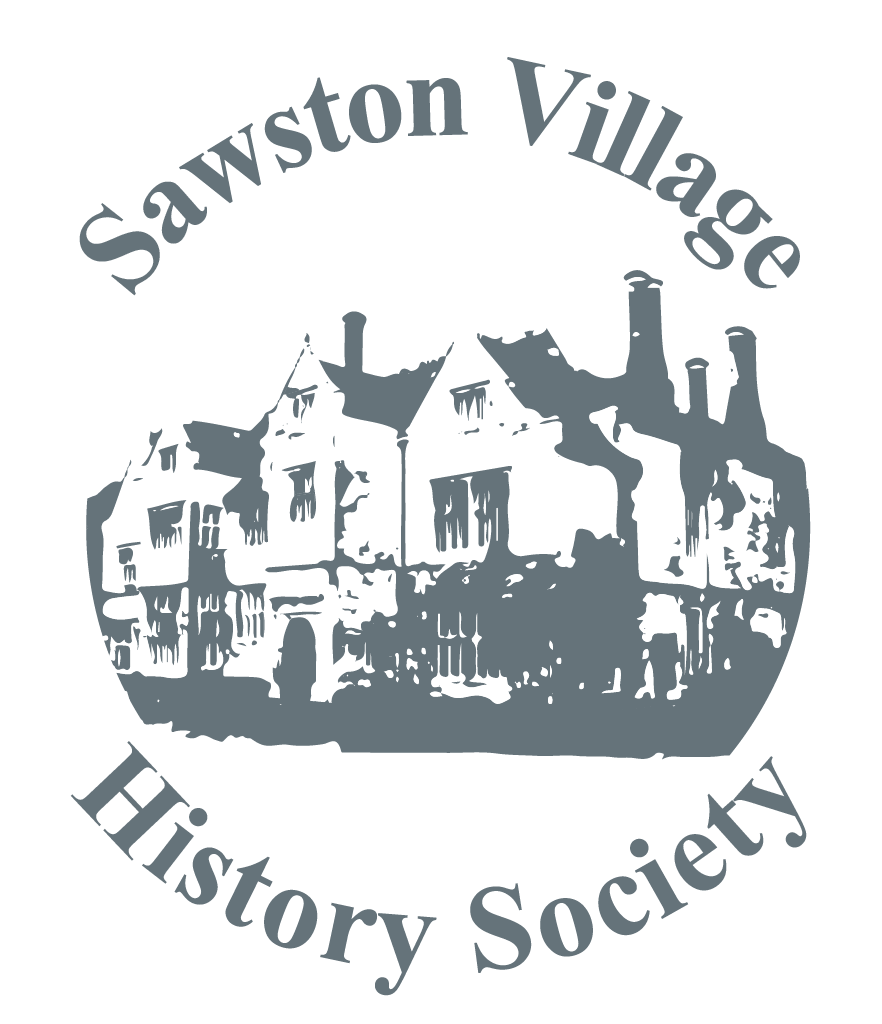
At the February meeting, the members of Sawston Village History Society had ample opportunity to revive their memories about fires which had occurred locally, over the years, and also about the firemen who had been called on to fight them.
The speaker was John Reynolds, who came at very short notice, to address the Society on his experiences as a retained fireman at the Sawston Fire Station, which had been newly opened in 1971. There had previously been a fire station at Whittlesford, but the facilities there were transferred to the new station in Sawston. It was intended to provide from here fire-fighting services over a wider area than just Sawston. Other nearby fire stations were at Cambridge and Linton.
Sawston Fire Station was invariably a very busy place and when the firemen were called out to attend an emergency they never knew what they would find on arrival at the scene.
In the early days, the service was called Cambridgeshire and Isle of Ely Fire Brigade, but later it became Cambridgeshire Fire and Rescue Service. This followed from the occurrence of as many emergencies involving some form rescue as it did dealing with fires. It is also worth noting that what the layman calls a fire-engine is actually called a fire appliance.
Retained firemen, which meant they were paid for call-outs, were provided with alerters, which bleeped when the men were needed for duty. There was also a test call every evening at 7 pm. Firemen still kept up their full time employment, and a number of them worked locally at the Spicers factory. On one occasion there was a call-out to a house fire at Fowlmere, and there were several Spicers men on the fire crew. On arrival at the fire they found it was at the house of the Manager of Spicers who was, of course, very pleased to see them.
John related many other of his experiences whilst on duty. He was trained as a driver and could drive an appliance either with or without flashing blue lights. Each appliance normally had a crew of four to six, and most vehicles carried a full complement of equipment for dealing with a fire or an accident. The appliances carried ladders, hoses, cutters and often a supply of water as well. They were provided with chemical protective suits, which had a large head-guard and face-cover, which could sometimes be claustrophobic, but despite the inconvenience it was still necessary to get on with the job.
Amongst the more notable emergencies in the district was the fire at Ickleton, when the church was severely damaged by an arsonist. There was a chimney fire at Sawston Hall, which gave the firemen problems with access for the ladders. At Sindalls, Babraham Road, a man fell into a bin of cement but was safely pulled out and survived the incident. There were several fires at local mills and at restaurant kitchens.
Some factories, such as Ciba-Geigy, Duxford, now Hexcel, maintained their own fire service. However, there was one occasion when the Sawston appliance was called on to attend an explosion there, when the lid of a glue-pot was blown off with such force that it left its clear imprint on a concrete beam at roof level.
One incident occurred at a house-fire one Boxing Day, where it appeared that Christmas decorations caused a fire resulting in severe damage to the living room, including the television set. John named many other well-known local buildings which had suffered fire damage whilst he was in service as a fireman. The problems in dealing with trapped pets invariably cause the owners much distress, not to mention the firemen themselves. Road accidents could also be complex requiring difficult cutting operations, and sometimes result in fatalities.
John brought two scrapbooks including cuttings of newspaper reports of incidents which the fire and rescue service had attended. He also brought his long service medal, having served 20 years at Sawston Fire station. There were photographs, taken over several years, of many of the members of the fire teams, including the sub-officer, Gilbert Whiffen, who was in charge of Sawston Fire Station. There were also photos on display of some of the appliances used at the Station over the years.
Rather coincidentally, the first home of the Sawston Fire Brigade, the rather tatty empty building with the corrugated steel roof to the left of the Black Bull, has just been demolished, with a new building being rapidly erected in its place, too small for a modern fire engine!
The next meeting of the Society will be on Thursday, 13th March and will feature a talk by Maureen James on “The Clarksons of Wisbech”. This will start at 7.30 pm at the Chapelfields Way Community Centre as usual.
The Sawston Community Archive Group (SCAG) now has a strong nucleus of members drawn from the Society. Our mission (as they now say), is to create a digital archive of anything relating to Sawston under the auspices of the Cambridgeshire Community Archive Network (CCAN) and we are intending to hold an open evening at the OWL in April. For further information please visit our web site: www.sawstonhistory.org.uk. or contact Bruce Milner on 01223 570596 for further information.
On Thursday, 10th April Mathew Hall from the CCAN will speak to the Society about this exciting new online archiving project and how local people can contribute. This will be at the same venue, starting at 7.30pm.
Our archivist, Bryan Howe is at the Sawston Heritage Centre in the Sawston Parish Council Office, Link Road on Monday mornings. Bryan is very amenable to arranging an alternative time to view the archives, if necessary, just ring him on 833963 to arrange a mutually convenient time.